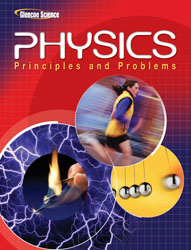1 A) It consists of light from just one source. B) It has smooth wave fronts. C) It has unsynchronized wave fronts. D) It is the same as monochromatic light. 2 A) 250 nm B) 410 nm C) 450 nm D) 720 nm 3 A) 334 nm B) 668 nm C) 1230 nm D) 1340 nm 4 A) 1.2×10-9 ly B) 3.6×10-6 ly C) 1.2×104 ly D) 3.6×107 ly 5 A) Light is monochromatic. B) Light is coherent. C) Light has particle properties. D) Light has wave properties. 6 A) 150 nm, 300 nm, 450 nm B) 150 nm, 450 nm, 750 nm C) 600 nm, 1800 nm, 3000 nm D) 2400 nm, 7200 nm, 12,000 nm 7 <a onClick="window.open('/olcweb/cgi/pluginpop.cgi?it=jpg::::/sites/dl/free/0078807220/617927/bo.jpg','popWin', 'width=NaN,height=NaN,resizable,scrollbars');" href="#"><img valign="absmiddle" height="16" width="16" border="0" src="/olcweb/styles/shared/linkicons/image.gif"> (5.0K)</a> A) n 1 < n film < n 2 B) n 1 = n film = n 2 C) n 1 > n film > n 2 D) n 1 < n film > n 2 8 n film = 1.45. What is the minimum thickness of the film for constructive interference with both rays inverted?<a onClick="window.open('/olcweb/cgi/pluginpop.cgi?it=jpg::::/sites/dl/free/0078807220/617927/bo.jpg','popWin', 'width=NaN,height=NaN,resizable,scrollbars');" href="#"><img valign="absmiddle" height="16" width="16" border="0" src="/olcweb/styles/shared/linkicons/image.gif"> (5.0K)</a> A) 45.9 nm B) 91.7 nm C) 183 nm D) 367 nm 9 A) 1.1 mm B) 2.3 mm C) 4.5 mm D) 9.1 mm 10 A) a series of bands nearly equally spaced apart B) a wide central band with narrower bands on either side C) a narrow central band with wider bands on either side D) a mixture of patterns





